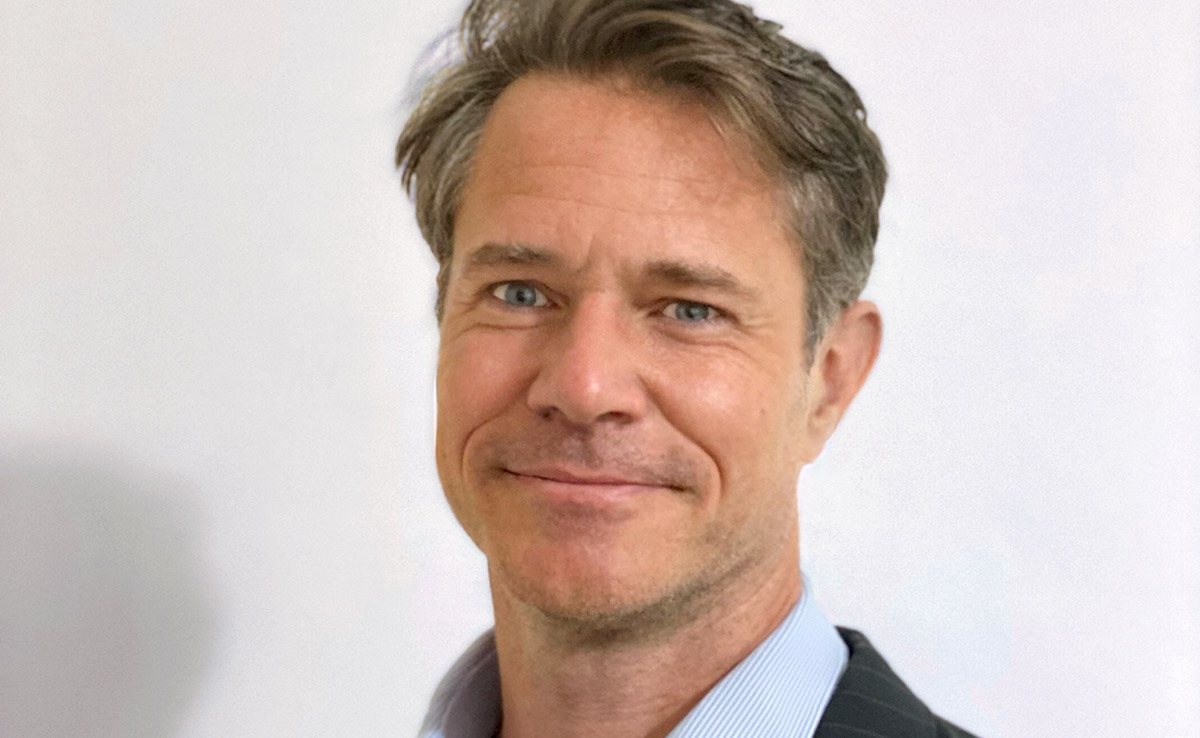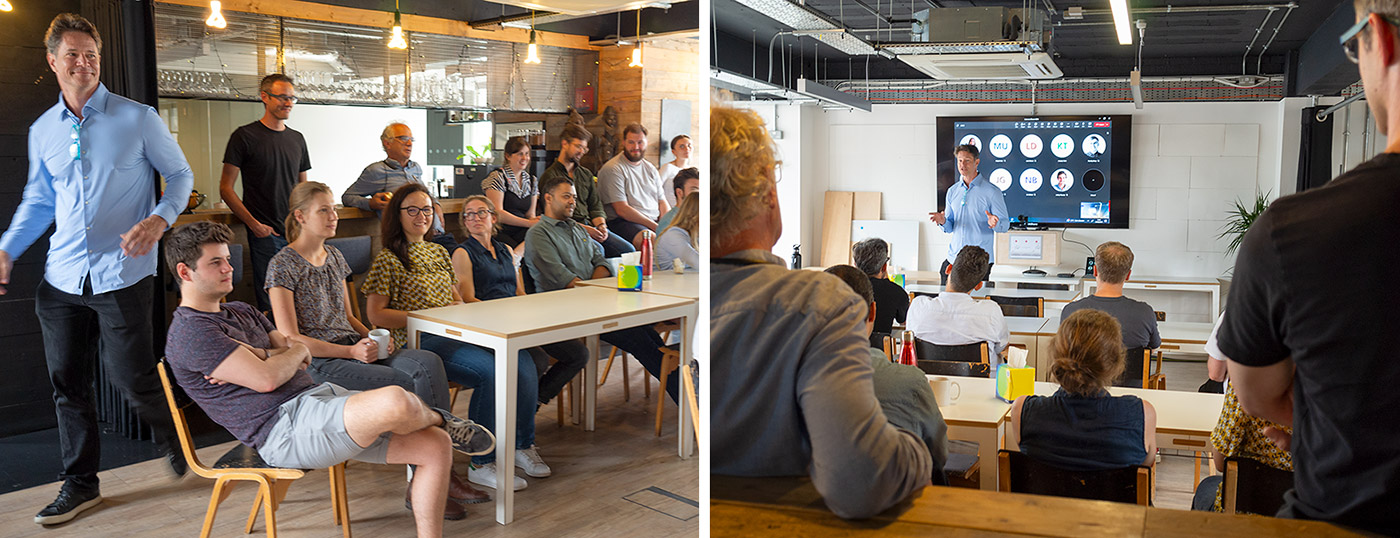Shonn Mills

“I have a positive attitude,” says Shonn Mills. “I’ve been told I bring something that adds holistically to the solution, that raises the team’s collective energy. The best days are when you have that ‘aha’ moment with a client — when you leave the room with everyone excited that you’re going create something. It’s completely addictive.”
One of engineering’s most potent challenges today is how best to support a more sustainable way for societies to develop, and “aha” moments are urgently required. In addition to founding Whitby Wood Mills with Mark Whitby and Sebastian Wood, Shonn is currently chair of the Council on Tall Buildings and Urban Habitat — a venerable non-profit research organisation that exists to generate knowledge about cities and their development. He finds that his role there supports and is supported by the values that also drive his professional interests.
Given the climate emergency, Shonn’s vision for his tenure as chair is to see CTBUH becoming increasingly proactive: “bringing together policymakers from around the world … There are some really great success stories of how to deal with urbanisation — let’s share best practice, take them on the road to places that could really use them. We’re looking at how to promote sustainable development policy, how you fund it, how you find the green finance.”
“There’s nothing like a team of like-minded, super-motivated people collaborating … It’s super-satisfying. It doesn’t happen every day but when it does, I would do this for free.”
Shonn has worked on projects in more than 35 countries and lived in Singapore, the UK, Denmark, Switzerland and his native United States. The variety of his experience has convinced him that, in global terms, one size of sustainable solution emphatically does not fit all.
“Europe and the UK have a very specific perspective,” he explains. “In some ways they’re way ahead in this conversation and so they should be. But there are things about urbanisation in other markets that they could learn from. It’s not all about carbon and timber and refurbishing listed buildings. It’s about habitat creation, social mobility, population density, and how you manage that in ways that are more sustainable going forward — in terms of transport, utilities, everything. You have to be aware of the complexities.”
Optimistically, Shonn sees sustainable practice beginning to proliferate in its varied forms. “Climate and carbon are on everyone’s agenda in a way they weren’t several years ago,” he says. “The requirements of international players are starting to influence local markets. So the question often is, how do you best arm the people involved locally with the tools to do some good?”
Shonn’s pragmatic attitude is rooted not just in his broad experience, but in his extremely thorough grounding in design at grass roots level. He grew up in Tallahassee, Florida, surrounded by a family of firefighters. The nature of the firefighter’s work, he recalls, involves a fair bit of unstructured time, and Shonn’s father liked to use this time to draw. “He was good at art,” says Shonn, “and I would sit there and sketch with him, which was always really nice.”
This shared interest eventually led Shonn to an architectural drawing course at the local college, and simultaneously to draughting work with a nearby engineering firm. “There was only one computer,” he remembers. “They had me doing everything, because I was the cheapest guy in the office. I learned the whole business while I was still at school.”
Continuing to fund his studies through work, he progressed to a degree course in architecture and — never one to do things by halves — took on additional work with a regional developer, where his remit soon expanded to include design.
“I started getting really good at draughting, until they would let me design and draw everything at the same time,” he explains. “Expensive, single-family homes, residential subdivisions, big box chains for the whole southeast. I was the only guy in the firm who could do AutoCAD. I got pretty fast.”
Eventually, Shonn’s employer offered to support his studies if he switched from architecture to engineering. The contrast between the work he was doing in his own time and the more abstract exercises he was expected to complete as a second-year architectural student convinced him to accept. “At school I was doing water colours of river rocks,” he says, “and at night I was drawing houses that were getting built. But it took me forever to finish school because I was working all the time.”
Still studying, Shonn found more work with an engineer he describes as his “first professional mentor”: an enterprising consultant whose firm carried out much of the local reconstruction necessitated by Florida’s frequent storms and hurricanes. “A lot of rural counties in Florida can’t afford their own public works department,” explains Shonn, “so we took those contracts. We rebuilt everything: water treatment plants, bridges …”
Shonn was therefore an unusually experienced new graduate by the time he gained his degree in civil engineering. He lost no time in leaving Florida for San Francisco, where he worked for seven years on “really fun civil engineering projects: pedestrian overpasses, underpasses, 800m long spans, a constant cycle of seismic retrofit work. I really enjoyed it.”
One such project was the construction of the Tacoma Narrows suspension bridge near Seattle in Washington State — a crossing made famous by the collapse in 1940 of the original bridge, whose undulating roadway earned it the nickname, “Galloping Gertie”. The version Shonn worked on is a new span that runs parallel to Galloping Gertie’s replacement. The bridge opened in 2007, but Shonn had moved on.
“We’re going to give the market something they desperately need … We’re not corporate, we’re agile, we’re creative, and we’re true to our values. We’re about making a positive impact.”
The opportunity to leave the US came when the firm he was working for won a programme management contract for a 1,000m long bridge across the Strait of Messina in southern Italy. Shonn went to Europe with it. From here, it was a short hop to the UK, where London was ramping up construction for the 2012 Olympics. Shonn took a job at the London office of Whitbybird, where he first met Mark Whitby and Sebastian Wood, and opened a new chapter in his career. It was still many years before Shonn — or indeed, Seb Wood — considered striking out on his own: “I’ve never had power ambitions,” he reflects. “I just like to have autonomy. I don’t like being told what to do.”
At Whitbybird, a proactive approach was expected. “Almost by mistake,” Shonn says, he began to understand that his passion for finding solutions was attractive to clients and architects alike. As he puts it: “I’ve always been really into the creative process but at Whitbybird, I realised that I could talk and I could sell as well as being an engineer. I started developing my own client relationships. And that made me realise I could set my own goals: that I could decide I wanted to work with certain people or on certain types of project, and put the pieces together to make it happen. That was empowering.”

Whitbybird’s merger in 2008 with global Danish consultancy, Ramboll, again opened horizons for Shonn at a propitious time. He seized every opportunity to work on very large, complex, international projects: “I only like projects that can be seen from space,” he jokes.
Leading Ramboll’s team for the award-winning development of Pulkovo Airport near St Petersburg, Russia, was a career milestone, while CityLife mixed-use development in Milan, Italy, remains another favourite. Each success strengthened Shonn’s ability to win more work because, as he says, “It’s not about the brand, it’s about the relationship — a collaboration where people really get the best out of each other. That’s how it works.”
Moving up the corporate ladder, however, eventually meant gaining a distance from the kind of work he most loved, and which motivates him to this day. His solution was to move out as well as up: to Singapore, where — still on behalf of Ramboll — he founded and ran an entirely new office. Within a few years, he was in charge of 300 people based in multiple offices across the region, and had additionally become involved in acquisitions. All that was missing was the autonomy he craved.
Now that he was ready to start a business partnership of his own, Shonn reunited with Mark and Seb. “It’s been a long time coming,” says Shonn, about Whitby Wood Mills. “I thought, my experience with Ramboll has been great, but now we’re going to do something different.”
Shonn’s enthusiasm about that difference remains palpable, and he’s more inspired than daunted by the challenges involved. “We’re going to give the market something they desperately need,” he says. “We’re not corporate, we’re agile, we’re creative, and we’re true to our values. We’re about making a positive impact.”
As important as ever, at the heart of the business is the sheer excitement of working with great teams, creating great projects. “There’s nothing like a team of like-minded, super-motivated people collaborating, making things happen, making a difference to a lot of people’s lives,” says Shonn. “It’s super-satisfying. It doesn’t happen every day but when it does, I would do this for free.”
December 2023

